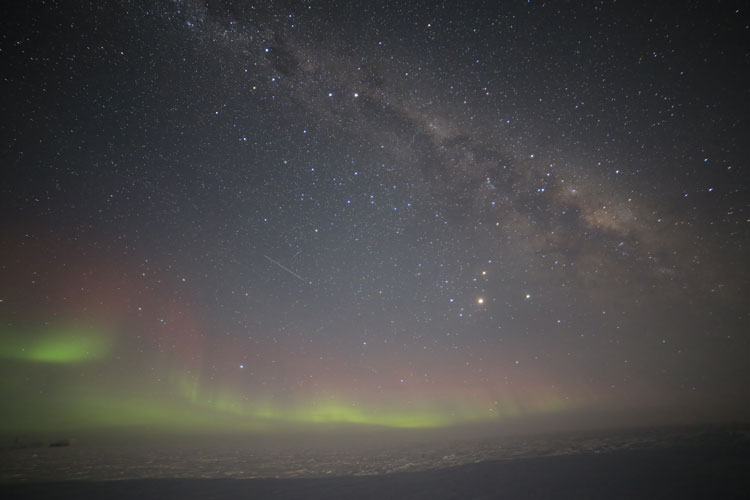
It’s aurora season at the South Pole. Two lone figures—both of IceCube’s winterovers—were out on the ice capturing images of the night sky. Although it’s a night sky, that tells us nothing about what time of day it is since it’s winter there and the sun remains down for about six months at a stretch. They might miss the sun at times, but it can’t be beat for taking photos of the magic that appears in the dark sky. In the image below, we have Mack waiting patiently (remember, it’s cold out there) with his camera in front of him on a tripod. The result of his 30-second exposure is shown in the subsequent image, with some low wispy auroras spread out below the expanse of the Milky Way overhead.
The long exposures are needed because the photographs would be too dark otherwise. There are many ways in which what we see with our eyes and what a camera captures are different. But when we can’t physically be someplace, photos are a great way to see what we’re missing. Besides the stars last week, there was also a very bright moon, illuminating the station and competing for attention with the auroras.




